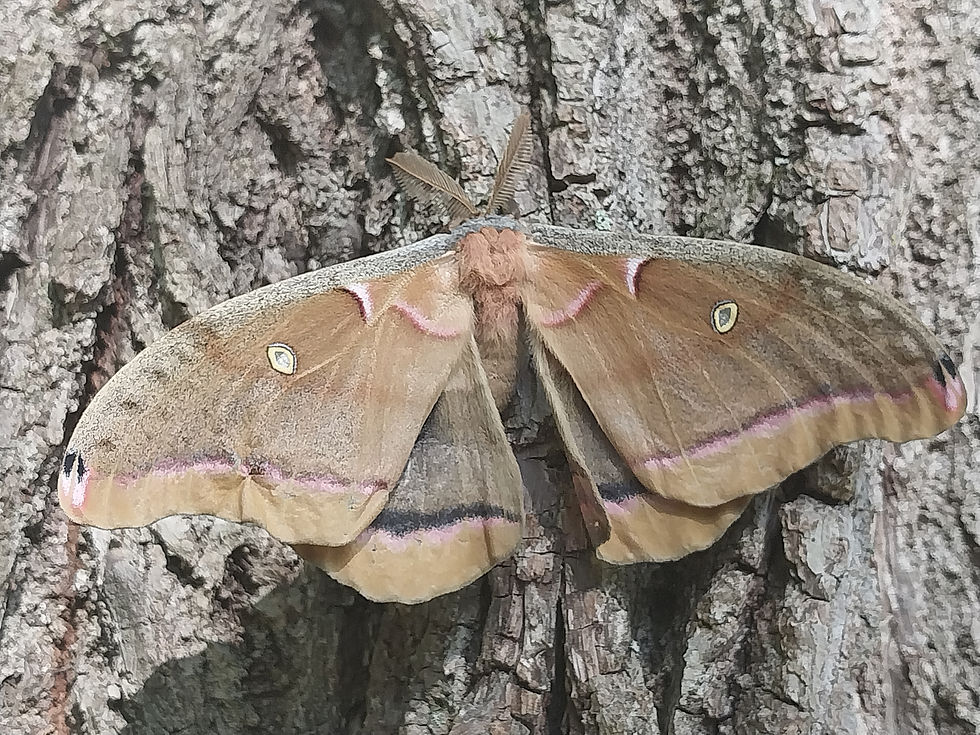
Official Web Archive

Legend of the Polyphemus Moth
An lepidoptera study
Polyphemus Moths are moths native to North American and to Northern Mexico. They are large silkmoths with little differences between both genders. Male have slimmer abdomens and thicker antennas. Females have thicker abdomens and thin antennas. Active at night, polyphemus moths attract bat predators. But yet, they confuse bat sonar by vibrating their wings. Like other silkmoths, polyphemus moths do not have mouth parts as adults. So their purpose is to mate and lay eggs on their host plants, which are oak trees, maple trees, hickory trees and other tree species native to temperate forests.

The word polyphemus means "many voiced: in Greek. But oddly enough, the reason the polyphemus moth is called that by scientists is from the cyclops, famous for their one eye. The polyphemus moth has one eyespot on each lower wing. However, the eyespots on the lower wings serve as a defense mechanism to any threat or predator. Predator get startled or spooked easily by thinking it's a bigger creature, similar to how the owl butterfly from South America's defense mechanism works.

Polyphemus moths go through a diapause stage as cocoons. This may last up to the winter season, especially around Canada. If found in warmer climates, then they are typically in cocoon stage for 3 to 6 weeks. Once the winter season is over they emerge as moths during the spring season.


